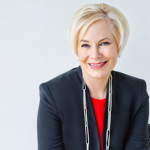Women make progress towards financial equality

The economic progress of Australian women marched higher over the past 12 months, helped by wages growth, more women in full-time work and occupying top company board positions.
The Financy Women’s Index, supported by Data Digger, gained 1.4 points or 1.1% to 126 points in the three months to September, from a revised 124.6 points in June 2018.
But when compared to the Financy Women’s Index (FWX) Progress Target of 173.3 points, the September result falls short by 37.5%.
“The FWX Progress Target is a new aspirational guide on economic equality which could be here in the next decade if women’s progress is maintained and uninterrupted,” said Financy Women’s Index founder Bianca Hartge-Hazelman.
Nicki Hutley partner Deloitte Access Economics said that it was “both remarkable and unexpected that economic gender equality is within our grasp.”
“There are still many barriers and examples of outdated attitudes. To ensure greater equality is reached as soon as possible, we must be vigilant. And governors and organisations need to continue to develop and support programs for diversity and inclusion,” said Ms Hutley.
Among the key drivers of economic progress for the September quarter was an increase in female full-time employment to over 3.16 million and a 20-year low in the average wage disparity between men and women.
The expansion of the Women’s Index to include the ASX 200 with the help of data from the Australian Institution of Company Directors (AICD) positively affected progress. Women now occupy 28.5% of ASX 200 board positions.
OneVue Managing Director Connie McKeage said “we need to continue to discuss important issues like inclusion and gender balance around board room tables and management, however we also need to increase the activity around these matters.
“We need sustainable change and Financy’s Women’s Index is one of the levers we can rely on to provide facts to support our calls to action. Every step forward we take as organisations that care, no matter how small those steps may seem at the time, can contribute to creating a better more balanced future.”
There are also signs that the superannuation gap between men and women may be closing, although in absolute terms the gap is still very substantial.
The country’s biggest super fund, AustralianSuper reported that the gap between the life-time retirement savings of men and women fell to 28% at the end of the 2018 financial year, from 30% in 2017.
AMP Financial Planning adviser Di Charman said the recent legislative change allowing people to “carry forward” their unused concessional contribution caps for up to five years was a positive measure for women.
“It will give women the opportunity to top up their super in years where they have more income and will help bridge the retirement gap,” said Ms Charman.
She added women should also remember that they can make additional after tax contributions to their super and claim them as a tax deduction.
“The key for women is to engage with their super and now is perfect timing with end of financial year statements being issued to fund members,” she said.
Education data suggests that wages and graduate salaries could be having an impact on the types of courses that women study beyond high school.
Female engineering graduates are earning more than male graduates, and are enrolling in this field at more than three-times the pace of more traditional female-dominated courses like Education.
Despite this, the average female graduate is still paid less than male graduates across all course areas.
Meanwhile Mining and Information Media and Telecommunications, which are among the highest paying sectors, stood out as having links to the fastest growing education pathways for women.
Improved wages and job outcomes helped the national gender pay gap fall to 14.6% in May, as reported in the September quarter, down from 15.2% in November 2017.
Health Care and Social Assistance recorded the biggest gender pay gap increase of any sector, up 9.6% to 25% in May compared to 22.8% in November.
About the Financy Women’s Index:
The Financy Women’s Index powered by Data Digger is an initiative designed to encourage women to live fearlessly by empowering them with key information on the picture of economic progress among Australian women on a quarterly basis.
The Financy Women’s Index differs from other economic measures, such as official wages and jobs data, because it focuses on women, whereas most of the headline data reported in the mainstream press reflects an average for the Australian population, but these figures are often skewed towards male outcomes as a result of a male dominated workforce.
The Index is designed to highlight trends among working women; from the courses they study once they leave high school, to what industries they work in, their earnings and savings in superannuation, through to those occupying top company board positions.
The Index is based on monthly, quarterly, biannually, and two-yearly data and methodology from the Australian Bureau of Statistics (ABS), the Australian Securities Exchange (ASX), the Australian Tax Office (ATO), the Australian Government Department of Education and Training and the Australian Institute of Company Directors
The Financy Women’s Index is an independent report, which is sponsored by Australian listed fintech company OneVue, AMP Financial Planning, the Association of Financial Advisers (AFA). It is also a partner of the Economic Security 4 Women.








